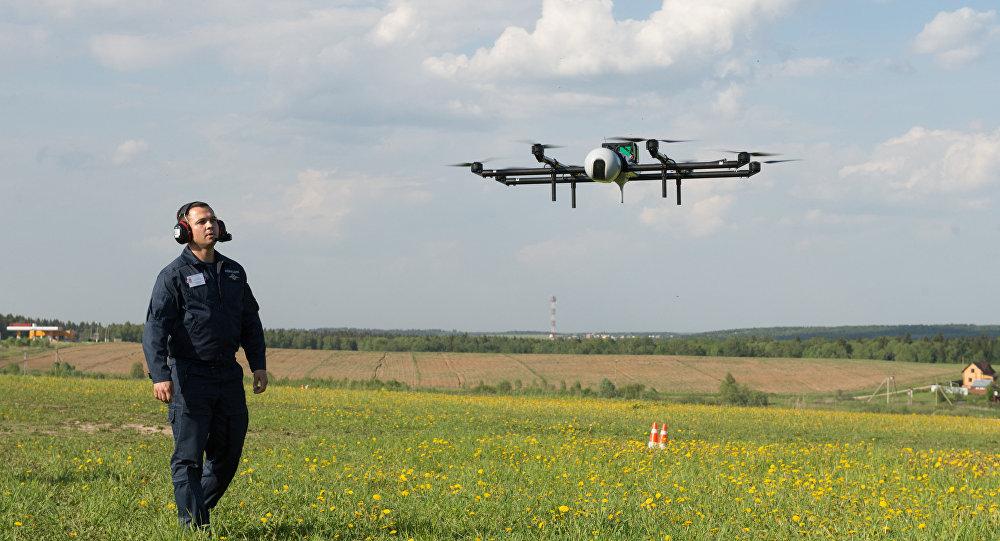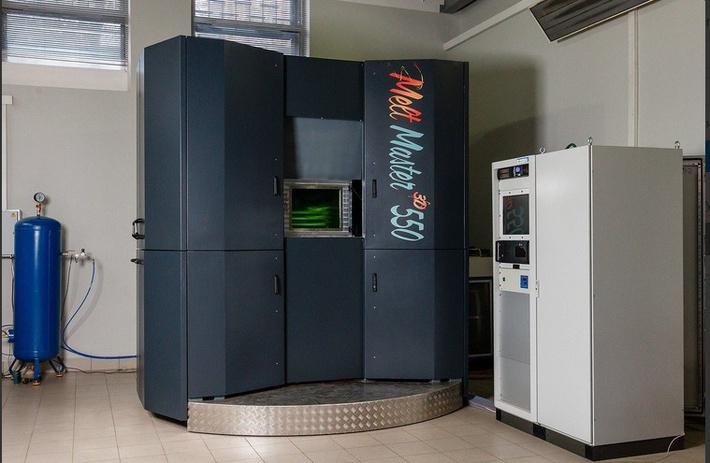 Russia has been very interested in drone technology lately. Last month, the Russian United Instrument Manufacturing Corporation (UIMC) presented the first-ever 3D printed drone to be manufactured in the country, unveiling it at the annual Innoprom industrial trade fair. Now a new bit of drone-related news has emerged from the country, as two major organizations begin work on an unmanned aerial vehicle (UAV) with a 3D printed engine.
Russia has been very interested in drone technology lately. Last month, the Russian United Instrument Manufacturing Corporation (UIMC) presented the first-ever 3D printed drone to be manufactured in the country, unveiling it at the annual Innoprom industrial trade fair. Now a new bit of drone-related news has emerged from the country, as two major organizations begin work on an unmanned aerial vehicle (UAV) with a 3D printed engine.
The Russian Foundation for Advanced Research Projects in the Defense Industry (FPI) and the All-Russian Scientific Research Institute of Aviation Materials (VIAM) have teamed up to design a drone that will be powered by VIAM’s 3D printed gas turbine engine. The engine, which was unveiled in June, was assembled entirely from 3D printed parts, according to VIAM Director General Evgeny Kablov.
The engine prototype weighs 900 grams and has 75 kilograms of thrust, according to VIAM, though the thrust may be increased to 150 kilograms without significantly increasing the mass of the engine. VIAM has been working with 3D printing since last year, with their first additively manufactured part coming in the form of a 3D printed combustion chamber swirler produced for aeroengine manufacturer Aviadvigatel. VIAM has intensified their research into 3D printing – particularly metal 3D printing – technology lately, as has FPI.“The engine is made entirely on the basis of VIAM additive manufacturing using new laser sintering technology and metal powder mixes for heat-resistant and aluminum alloys, which have also been developed by the institute’s experts,” Kablov told Russian publication Izvestia. “We were able to print an engine with unique parameters impossible to achieve with conventional casting by using additive manufacture technology. For example, the thickness of the combustion chamber’s walls is 0.3 millimeters. Such parameters are only possible with 3D printing.”
 FPI was founded in 2012 for the purpose of aggressively pursuing advanced technological research for military and defense purposes. At the time, Russia was suffering from technological stagnation, with an increasing gap between it and other Western countries. FPI was formed to close the gap, and a lot of their research, especially lately, has focused on 3D printing. Russia overall has been working intently to develop additive manufacturing technology for the nuclear power, aerospace and defense industries; just last month the country’s nuclear energy corporation, Rosatom, announced that they would begin to produce nuclear components on their industrial metal 3D printer, the first ever to be developed by a Russian corporation.
FPI was founded in 2012 for the purpose of aggressively pursuing advanced technological research for military and defense purposes. At the time, Russia was suffering from technological stagnation, with an increasing gap between it and other Western countries. FPI was formed to close the gap, and a lot of their research, especially lately, has focused on 3D printing. Russia overall has been working intently to develop additive manufacturing technology for the nuclear power, aerospace and defense industries; just last month the country’s nuclear energy corporation, Rosatom, announced that they would begin to produce nuclear components on their industrial metal 3D printer, the first ever to be developed by a Russian corporation.
There have been a lot of firsts for Russia in terms of 3D printing lately, and if there’s any way to quickly catch up to other countries in terms of technology, 3D printing research is a good bet. FPI deputy head Alexander Panfilov confirms that this won’t be the last collaboration between FPI and VIAM. The two organizations will continue to work together to experiment with 3D printing and help further the development of a strong additive manufacturing sector in Russia.
“After the experiment, we will begin joint work on developing additive technologies in our country to broaden the range of materials as well as developing our own unique 3D printing stations,” he said.
Discuss further over in the 3D Printed Turbine Engine for Drone forum at 3DPB.com.
[Source: Sputnik International]
Subscribe to Our Email Newsletter
Stay up-to-date on all the latest news from the 3D printing industry and receive information and offers from third party vendors.
You May Also Like
Profiling a Construction 3D Printing Pioneer: US Army Corps of Engineers’ Megan Kreiger
The world of construction 3D printing is still so new that the true experts can probably be counted on two hands. Among them is Megan Kreiger, Portfolio Manager of Additive...
US Army Corps of Engineers Taps Lincoln Electric & Eaton for Largest 3D Printed US Civil Works Part
The Soo Locks sit on the US-Canadian border, enabling maritime travel between Lake Superior and Lake Huron, from which ships can reach the rest of the Great Lakes. Crafts carrying...
Construction 3D Printing CEO Reflects on Being Female in Construction
Natalie Wadley, CEO of ChangeMaker3D, could hear the words of her daughter sitting next to her resounding in her head. “Mum, MUM, you’ve won!” Wadley had just won the prestigious...
1Print to Commercialize 3D Printed Coastal Resilience Solutions
1Print, a company that specializes in deploying additive construction (AC) for infrastructure projects, has entered an agreement with the University of Miami (UM) to accelerate commercialization of the SEAHIVE shoreline...































